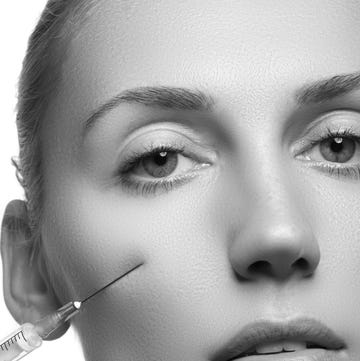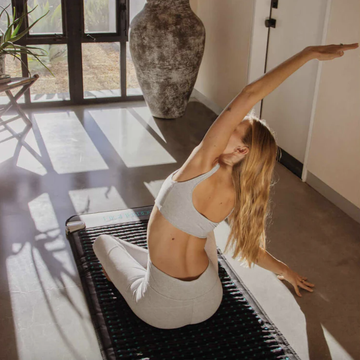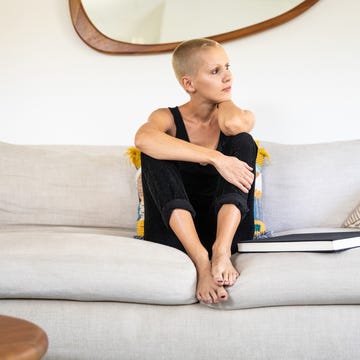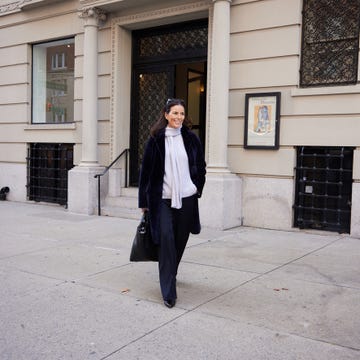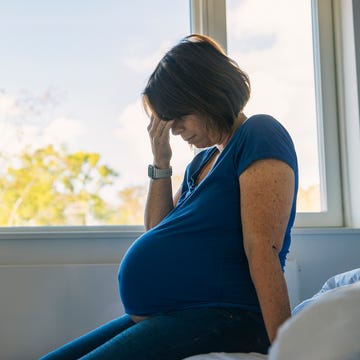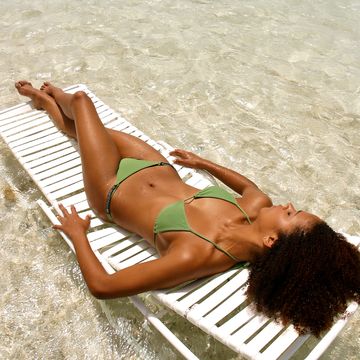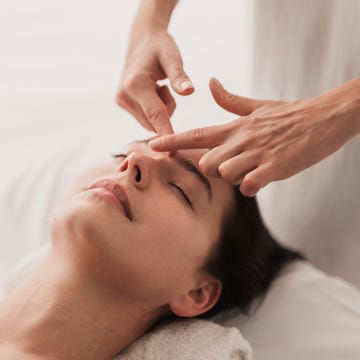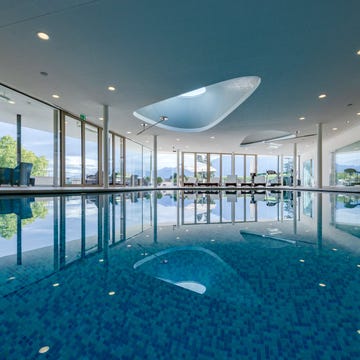Coco Chanel is credited (or blamed, depending on your perspective) for inventing tanning. Legend has it she got accidentally broiled on a trip to the Riviera, and her fans, thinking everything she did was glamorous and chic, began roasting themselves in imitation. Chanel, of course, could not have predicted the trend's frightening culmination nearly a century later: Snooki.
But seriously, folks, if Snooki and her sister in drunk-and-disorderly Oompa-Loompanity, Lindsay Lohan, haven't convinced you that the sun-baked look has become less Coco and more loco, consider this fun fact: Melanoma rates are increasing around the world, but the incidence among American women ages 15 to 39 has more than doubled over the past 30 years, rising more steeply than for any other age or gender bracket. (In absolute numbers, there are still more cases of melanoma among older people because, perhaps obviously, the longer you're around, the more rays you catch.)
So why are young women at the red-hot center of the epidemic? According to skin cancer experts across the country, there seem to be several likely culprits.
Willful Stupidity
Melanoma is the deadliest form of skin cancer. According to the American Academy of Dermatology, one American dies from it almost every hour. And melanoma has been incontrovertibly linked to ultraviolet (UV) exposure from the sun and/or indoor tanning. "[Tanning] is a real scourge," says David Fisher, MD, PhD, chairman of the Department of Dermatology at Massachusetts General Hospital. "There are very few cancers where we know as much about the cause. But the amazing and humiliating thing is that the incidence is still rising more steeply than for any other cancer."
Despite knowing full well that tanning is bad for us (not to mention the wrinkles and liver spots), we don't seem to be acting on the knowledge. A recent survey by the American Academy of Dermatology found that 81 percent of women ages 14 to 22 had tanned indoors or outdoors frequently or occasionally in the past year. This is not just people playing tennis who happen to get some sun—this is lying in the sun as recreation in and of itself, or paying money to be radiated in a tanning booth. Can you imagine if 81 percent of young women had taken up smoking last year? It's hard to think of any other potent known carcinogen that young women partake of so blithely. (That said, while indoor tanners, for example, bump up their chances of getting melanoma by 75 percent, regular smokers increase their lung cancer risk by 1,200 percent.)
The World Health Organization categorizes UV light from indoor tanning beds as a known carcinogen and has recommended that the beds be banned except for medical use (mostly to treat psoriasis). The U.S. Food and Drug Administration barely regulates the beds, however. Fisher blames the tanning industry's powerful lobby in Washington, DC, which spins any attempts at controlling the practice as punishing small businesses. (When Obama put through a bill levying a 10 percent tax on tanning at a salon, Snooki mouthed off about the president and urged everyone to give up indoor tanning to avoid filling public coffers—which is pretty funny, because that's exactly the public health goal the tax was intended to achieve.) UV lamps have also been proven to cause premature aging, immune suppression, and eye damage. Though tanning beds are touted as a way to get a "base tan" and prevent sunburns, 58 percent of adolescents who use them get burned, according to a study by the American Cancer Society. And, of course, sunburns are the number-one preventable cause of melanoma.
Or Maybe It's Not Willful...
There's a small but growing body of evidence that our compulsion to bronze is not entirely voluntary. Some women may actually be tanaholics. One study of college women who visit tanning salons found that more than 30 percent exhibited the hallmarks of addiction, such as trying but failing to cut back, or missing social or work obligations to tan. "It's not as outlandish as it sounds," Fisher says. We need the sun to manufacture vitamin D, and we need vitamin D to survive. These days we can pop a vitamin, but millions of years ago as humans were evolving, we would have needed to go into the sun. So it makes sense for us to have evolved a drive to seek the sun as often as possible. And research on seasonal affective disorder (SAD)—which 4 to 6 percent of Americans suffer from—shows that the sun can boost your mood. But there's a happy medium between living in a cave and cooking your skin until it sprouts tumors.
Women who find themselves unable to stop tanning might have more success if they treat it as a true addiction—seek help, get support, and put up some big inspirational pictures of pale beauties like Katy Perry and Mary Louise Parker (who is reportedly obsessive about sunscreen—I once saw her trying on shoes at Barneys, and, though she is 47 years old, she has the skin of an eight-year-old, I swear to Ra, the Egyptian sun god).
Blame It On Rio
You'd think that people such as farmers and construction workers who spend all day outside would be at particular risk for melanoma, yet studies have shown that continuous sun exposure actually protects against the disease (although it is implicated in the far less deadly non-melanoma skin cancer). Instead, melanoma is associated with intense, intermittent UV exposure, the type you get from hitting a tanning salon—or a Caribbean beach in December. "Call it the airplane effect," says Manhattan dermatologist Dennis Gross, MD. "Melanoma rates have increased along with air travel. Planes made it possible to dramatically change your latitude and the amount of sun your skin is exposed to in one day."
A recent study of young Caucasian women—most of these studies are done on fair people because the lighter your skin, the more vulnerable you are to skin cancer—found that the wealthiest had the most exaggerated risk of melanoma. Disney princesses, take note: Fairest in the land? Living in a castle? Better go get a mole check, pronto! But it's not just Gwyneth and Cinderella who are at risk: Melanoma rates have been increasing at nearly 3 percent a year among Hispanics. While only a small number of Asians and African-Americans get the disease—and their cases may be more related to a genetic glitch than to sun exposure—they're often diagnosed only after the melanoma has metastasized, and their survival rate is thus significantly lower than it is for Caucasians.
Christina Clarke, PhD, research scientist at the Cancer Prevention Institute of California and a coauthor of the aforementioned study, speculates that wealthier women may be more at risk because they have more money and time to devote to leisure activities. To paraphrase Noel Coward: Only mad dogs and the wives and daughters of hedge-fund managers go out in the noonday equatorial sun wearing nothing but a Missoni string bikini and Prada sunglasses.
Sunscreen Isn't a Silver Bullet
While no dermatologist in his right mind would ever tell people not to wear sunscreen, lately doctors have been forced to admit that it is not all-powerful. "Wear sunscreen, wear sunscreen, wear sunscreen!" Fisher says. "As a dermatology department chairman, I'd be shot and fired if I didn't say `wear sunscreen.' But it is also fair to say that sunscreen isn't enough."
I was somewhat shocked to learn that many studies have shown increases in melanoma among sunscreen appliers, and only one study has ever linked its use to reductions in the incidence of the disease. That report, published just this past January, followed a group of white Australian adults who were given free, unlimited SPF 16 sunscreen and instructed to wear it every day on their heads, necks, arms, and hands (melanoma is most likely to occur on women's lower legs, and men's heads, necks, and torsos) during their normal activities and to reapply after sweating, bathing, or prolonged sun exposure. (Scientists weighed the subjects' sunscreen bottles to ascertain compliance.) The control group members were told to use sunscreen whenever they felt it was necessary. Ten years later, the researchers noted a 50 percent decrease in melanoma cases among those in the daily group.
In an accompanying editorial, scientists from the University of Pennsylvania praised the study but pointed out that most Americans use sunscreen like the control group did—scantily and occasionally. The general recommendation is that adults use an ounce of sunscreen for optimal protection (that's two tablespoons—meaning, you'd go through an average bottle of sunscreen in a week or less if you were using it like the daily application group in the Australian study). However, research shows that we apply sunscreen so thinly, we get only about a third of the labeled SPF (so your SPF 15 is really functioning more like an SPF 5). Secondly, we fail to reapply every two hours or after swimming or sweating, as recommended. And third, we don't tend to use sunscreen to protect ourselves in our daily activities but to prolong our time in the sun.
Governmental Lollygagging
The sunscreens available to the American consumer are in desperate need of an update. Most people don't realize that SPF—the sun protection factor—refers only to a sunscreen's ability to block UVB rays. Despite years of pressure from dermatological, cancer, and consumer groups, the FDA has not yet instituted a rating system for UVA protection. The problem is that UVB rays are the ones that cause burning, the physical sign that you've had too much sun. So even if you do a great job applying your sunscreen and block most of the UVB, you could still be getting a megadose of UVA, which, though weaker, accounts for up to 95 percent of sunlight. "If burning is the signal to get out of the sun and your sunscreen takes away the warning signal, but doesn't protect you from all UV rays, it could be doing worse than nothing," Fisher says. It could be lulling you into a false sense of security and encouraging you to expose yourself to excessive overall radiation, he says. So, for example, the gal who thinks she's getting a "safe tan"—although that's a term that gives skin cancer experts tension headaches—by wearing SPF and extending her time in the sun to bronze slowly may actually be making her sun damage worse by massively increasing her dose of UVA light. (And by the way, ladies, estimates are that 80 percent of aging is due to UVA rays.)
Further, we could use some new and improved sunscreen formulations, says Sonya Lunder, a senior analyst for The Environmental Working Group, a consumer advocacy and education nonprofit that puts out an annual guide on sunscreen safety and effectiveness. Whereas European sunscreen makers have seven UVA-absorbing ingredients to choose from, she says, American manufacturers have only three: avobenzone, titanium dioxide, and zinc oxide. Several European ingredients with much higher effectiveness (Tinosorb S, Tinosorb M, and Mexoryl SX) have been waiting for FDA approval for five years.
The last promised deadline for a new sunscreen rating system, which would cover UVA rays, was December 2010. The new sunscreen ingredients were anticipated to receive the FDA's okay in April of this year. Both dates passed with nary an approval, however, and new deadlines were slated to be set in June. FDA spokesperson Shelly Burgess says the agency hopes "to publish broad spectrum testing" standards "as soon as possible." She also notes that Mexoryl SX is available on a limited basis in the L'Oreal brands Kiehl's and La Roche-Posay (in its Anthelios line).
Shady Lady
Still, melanoma is not a problem we will be able to solve with sunscreen alone. "The best sunscreen ingredient," Fisher says, "would be a roof." Barring that, Gross offers a slew of practical recommendations: Double up on your sunscreen to get the broadest spectrum of protection. Apply an avobenzone block with a titanium-dioxide or zinc oxide chaser, especially on spots where you've previously burned, or on children. If you must use aerosol sunscreens, he says, do it outside and hold your breath (they're not as good for the lungs as they are for the skin). Invest in some fabulous sun hats. And try SPF/UPF clothing. Some of it is actually not that bad looking (check out Patagonia and Cabana Life's lines).
"If you look at all the guidelines, they always talk about sun avoidance. The last line of defense is sunscreen," says Steven Q. Wang, author of Beating Melanoma and director of dermatologic surgery and dermatology at Memorial Sloan-Kettering Cancer Center in New York City. "At the same time, I'm completely aware that it doesn't make sense to tell the public to stay inside. There's a tremendous amount of benefit to psychological and physical well-being. Moderation is the key."


